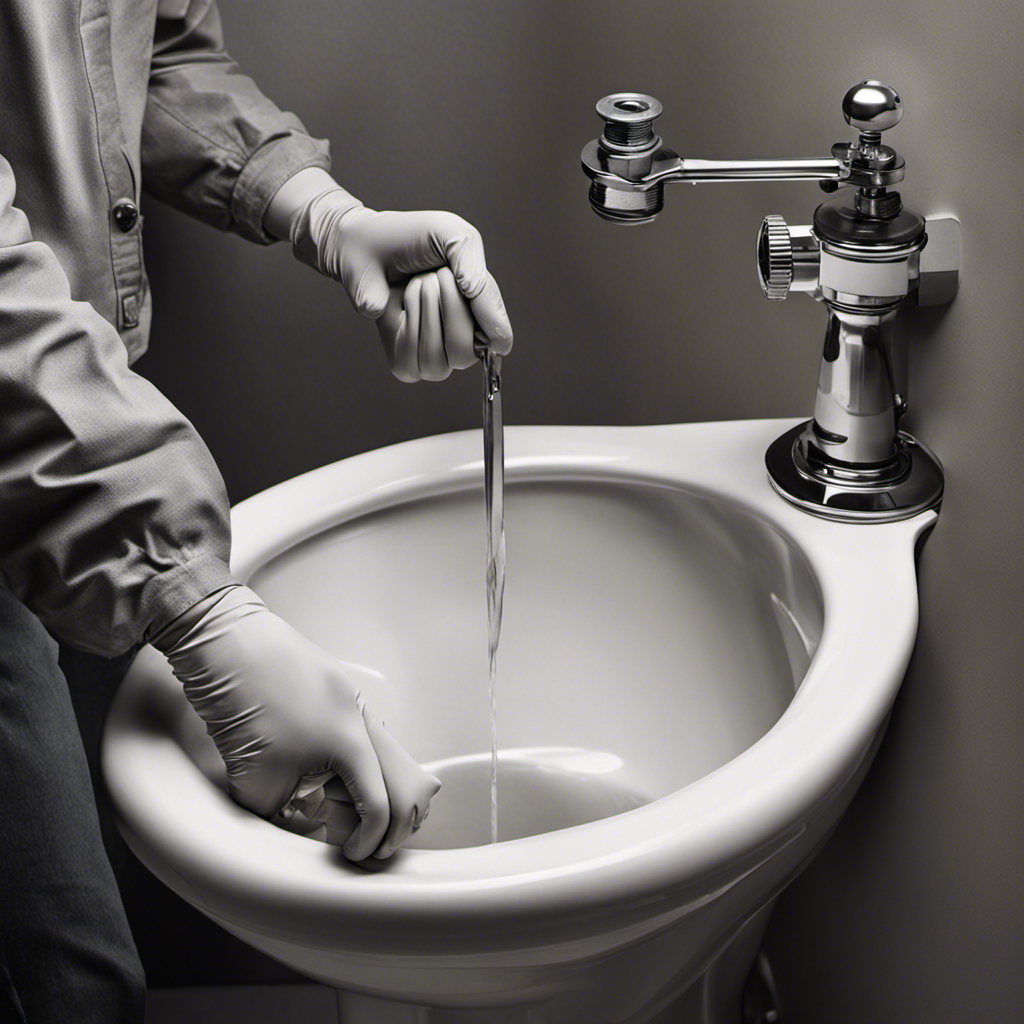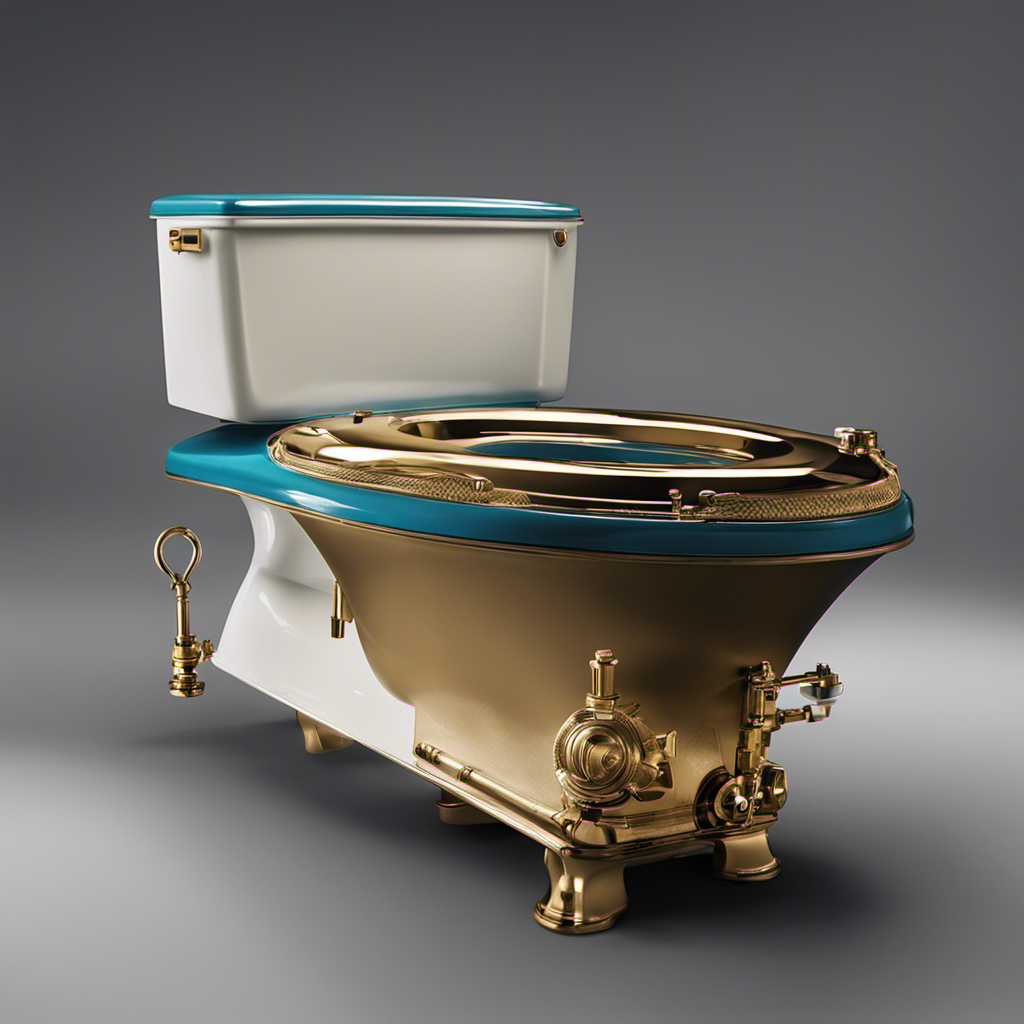Having a running toilet can be a real nuisance. It’s not just the constant sound of water running that gets on your nerves, but also the wasted water and the higher water bill that comes with it.
But fear not, for I am here to share with you some practical tips on how to stop a running toilet. By understanding the cause, identifying common parts, and troubleshooting techniques, you’ll be able to fix that annoying problem in no time.
So let’s dive in and put an end to that never-ending flush!
Key Takeaways
- Leaking flapper valve and improperly adjusted toilet float are common causes of a running toilet.
- Understanding the different toilet parts such as the fill valve, flush valve, and overflow tube is essential for troubleshooting and maintenance.
- Troubleshooting techniques include checking the fill valve, practicing water conservation methods, and regular toilet maintenance.
- Repairing or replacing faulty components can effectively fix running toilet problems, but professional help may be needed for complex issues or older toilets.
Understanding the Cause of a Running Toilet
Understanding the cause of a running toilet can help you fix the problem more effectively. One common cause of a running toilet is a leaking flapper valve. If the flapper valve is not sealing properly, water will continuously leak into the toilet bowl, causing it to constantly run. To diagnose if this is the issue, you can perform a simple test. Add a few drops of food coloring into the toilet tank and wait for a few minutes. If the colored water seeps into the bowl without flushing, then you have a leaking flapper valve.
Another possible cause of a running toilet is an improperly adjusted toilet float. If the float is set too high, it can cause the toilet to continuously fill with water, leading to a running toilet. By identifying these common issues, you can take the necessary steps to fix your running toilet.
Moving on to the next section, let’s take a look at how to identify the different parts of a toilet.
Identifying Common Toilet Parts
Take a look at the various parts of your toilet to identify the common ones. Understanding these components is essential for proper toilet maintenance and troubleshooting toilet water leaks.
Here are three sub-lists to help you understand the different parts and their functions:
-
Fill Valve: This valve controls the flow of water into the toilet tank and is responsible for refilling it after each flush.
-
Flush Valve: Also known as the flapper, it is a rubber seal that opens to release the water from the tank into the bowl during flushing.
-
Overflow Tube: This tube prevents the tank from overflowing by directing excess water into the bowl.
Knowing these common toilet parts will assist you in identifying and fixing any issues that may arise.
Now, let’s move on to the next section to learn some troubleshooting techniques for fixing a running toilet.
Troubleshooting Techniques for Fixing a Running Toilet
Let’s start by checking the fill valve to see if it’s causing the issue.
A running toilet can waste a significant amount of water, so it’s essential to troubleshoot and resolve the problem promptly.
One way to conserve water and ensure the toilet functions properly is by employing water conservation methods. For instance, installing a dual-flush system allows you to choose between a full or partial flush, reducing water usage.
Regular toilet maintenance is also crucial. Keep an eye on the fill valve, flapper, and flush handle for any signs of wear or damage.
Simple tips like avoiding flushing excessive toilet paper or foreign objects can prevent clogs and keep your toilet running smoothly.
If troubleshooting doesn’t solve the problem, it may be necessary to repair or replace faulty toilet components, as we will discuss in the subsequent section.
Repairing or Replacing Faulty Toilet Components
To repair or replace faulty toilet components, start by shutting off the water supply using the shut-off valve located near the base of the toilet. This will prevent any water from flowing while you work on the toilet. Once the water is off, you can proceed with the necessary repairs or replacements.
Here are some important points to consider:
- Hiring a professional for toilet installation or repairs can save you time and ensure the job is done correctly.
- Professional toilet repairs are recommended for complex issues or when dealing with older toilets.
- It’s crucial to use the right tools and materials for the job to avoid further damage or complications.
Preventing Future Toilet Running Issues
Make sure you routinely check the water level in your toilet tank to prevent any future issues. By doing this simple task, you can save yourself from the hassle and expense of a running toilet.
Not only will it help you conserve water, but it will also contribute to a more eco-friendly lifestyle. Water conservation is essential in today’s world, and small steps like monitoring your toilet’s water level can make a big difference.
Additionally, consider investing in eco-friendly toilet options, such as dual-flush toilets or low-flow toilets. These options use less water per flush, helping you reduce your water consumption even further.
Frequently Asked Questions
How Much Does It Cost to Fix a Running Toilet?
Fixing a running toilet can be cost-effective. Some common reasons include a faulty flapper or fill valve. Replacing these parts can range from $20 to $50. However, the cost may vary depending on your location and the specific issue.
Can I Fix a Running Toilet Myself, or Do I Need to Call a Plumber?
I can fix a running toilet myself, no need to call a plumber. Some toilet repair tips I’ve learned are checking the flapper, adjusting the water level, and cleaning the fill valve. Common causes of running toilets include a faulty flapper or a high water level.
Is a Running Toilet Wasting a Lot of Water?
Yes, a running toilet can waste a significant amount of water. It’s essential to address this issue promptly to conserve water and minimize the environmental impact.
Can a Running Toilet Cause Any Damage to My Bathroom or Plumbing?
A running toilet can cause potential consequences to your bathroom and plumbing. To prevent damage, it’s important to address the issue promptly. Regular maintenance, checking for leaks, and replacing faulty parts can help avoid costly repairs.
How Often Should I Check My Toilet for Potential Running Issues?
Toilet maintenance is important to prevent running issues. Regularly check for signs of a running toilet, such as continuous water flow or strange noises. Catching it early can save water and avoid potential damage.
Conclusion
So there you have it, folks! Now you know how to stop a running toilet and prevent future issues.
Remember, just like a leaking faucet can waste gallons of water, a running toilet can also lead to significant water wastage.
By taking the time to understand the cause of the problem, identifying the faulty parts, and using the troubleshooting techniques we discussed, you can save both water and money.
Don’t let a running toilet drain your resources – take action and fix it today!










